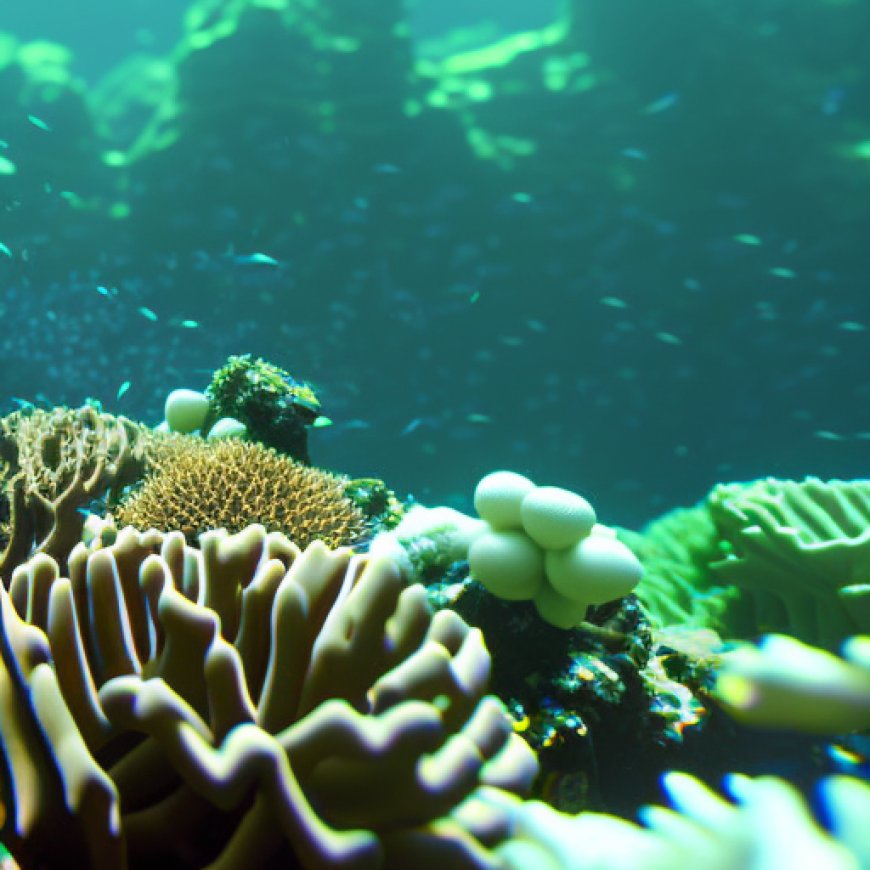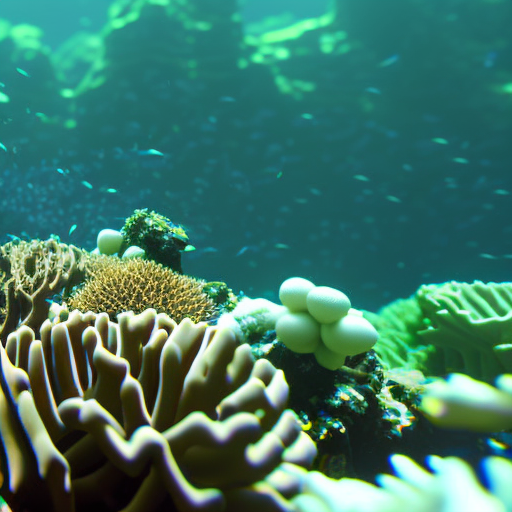Earth’s Coral Reefs Face a New, Deadly Mass Bleaching. They Can Still Be Saved
Earth's Coral Reefs Face a New, Deadly Mass Bleaching. They Can Still Be Saved Scientific American


Ocean Heat and Coral Bleaching: A Global Crisis
Ocean heat is killing corals at such high rates that scientists have declared Earth to be in its fourth global bleaching event—the second in a decade. The announcement comes from a partnership between the U.S. National Oceanic and Atmospheric Administration and the International Coral Reef Initiative.
The Impact of Coral Bleaching
Despite their plantlike appearance, corals are animals, and their vibrant colors come from microbes that live inside the creatures and offer them a range of services. Some of these so-called symbionts produce sugars through photosynthesis, some provide other nutrients for the corals, and some protect their health. But when corals are stressed, they eject their symbionts, an often fatal move.
Corals can bleach in response to a range of threats, but today they most commonly do so because water temperatures are too high for them. And for more than a year, global sea-surface temperatures have been at record highs in many areas. For corals, it’s been a disaster. During the Northern Hemisphere’s summer in 2023, widespread bleaching occurred in the Florida Keys, the Caribbean and the eastern Pacific. The Southern Hemisphere’s last summer added much of the Great Barrier Reef to that casualty list. And scientists are warning that the same event may be occurring now throughout the Indian Ocean and the region north of Australia.
On supporting science journalism
If you’re enjoying this article, consider supporting our award-winning journalism by subscribing. By purchasing a subscription you are helping to ensure the future of impactful stories about the discoveries and ideas shaping our world today.
Interview with Terry Hughes: The Future of Coral Reefs
Scientific American spoke with Terry Hughes, a marine biologist at James Cook University in Australia, about the global bleaching event and what the future may have in store for the planet’s coral reefs.
Why do corals bleach?
Very large-scale or global bleaching events are triggered by exceptionally warm sea temperatures driven by anthropogenic heating primarily from burning fossil fuels and from deforestation. Nothing else is happening at that kind of scale, and there’s nowhere to hide from global warming. Even the most remote and most pristine coral reefs are vulnerable to these repeated bouts of bleaching.
Bleaching is only one of several stress responses by corals. Sometimes, there isn’t actually enough time for bleaching to unfold; the corals just die from heat stress directly—they literally cook. We saw that last summer in the Florida Keys and throughout the Caribbean, where sea temperatures were off the charts.
We also see a phenomenon where a coral becomes unusually colorful; it glows. And that’s caused by a protein produced by the coral in a desperate bid to stay alive. Those proteins act as a sort of sunscreen, but it’s not a very effective way of defending against record temperatures. These corals typically die within a week or two of becoming very colorful.
Can Some Bleached Corals Survive?
It’s impossible that all of the corals that are bleached will survive. Bleaching is not necessarily fatal, but often it is. And the likelihood of the corals dying depends on the severity of the bleaching and how long it lasts. A mass bleaching event is, by definition, a mass mortality event. The reality is: we are losing literally billions of corals on the world’s coral reefs.
Evaluating Bleaching and the Outlook for Recovery
There are two ways to measure the extent of bleaching. One is directly through observations of individual reefs. And the other is indirectly using satellite data, which is what NOAA does. Satellite data tell you how hot the water has been for how long. So we talk about the accumulated heat stress over the summer months, and you can use that level of heat stress from satellites as a proxy for the intensity of bleaching. It’s good to ground truth with data from underwater or aerial surveys of the extent of bleaching.
I have conducted aerial surveys of the Great Barrier Reef three times. It takes about eight days of flying in a small plane or helicopter to crisscross about 1,000 reefs and score the extent of bleaching. And that allows us to produce a map of the entire Great Barrier Reef showing which portions of the reef have been bleached. The map has lots of red dots [that indicate bleaching] on it this year and very, very few green dots where there was no bleaching. This year 75 percent of the Great Barrier Reef has bleaching. And it’s the size of Italy or Japan, so it’s a big piece of real estate. For 75 percent of it to be bleached in just one event—bearing in mind that this is the fifth [local bleaching event] in eight years—is really very shocking.
Next week I’ll be at southern Great Barrier Reef sites that I have been studying since 1985, and I’m dreading it. The reef has been exposed to the highest level of heat stress it has ever seen. We already know that 80 percent of the corals at these sites are bleached, and I’m fully expecting the majority of those to be dead or dying.
When we fly over a reef with no bleaching, we literally cheer. It’s very stressful to spend an entire day in a plane flying over, say, 200 reefs, all of which are severely bleached. It’s quite a confronting sight, but it’s the only way to get the big picture at the scale of the Great Barrier Reef. Tragically, in the Caribbean and particularly in the Florida Keys, it’s no longer possible to do aerial scores of bleaching because there aren
SDGs, Targets, and Indicators
| SDGs | Targets | Indicators |
|---|---|---|
| SDG 13: Climate Action | Target 13.3: Improve education, awareness-raising, and human and institutional capacity on climate change mitigation, adaptation, impact reduction, and early warning | Indicator not mentioned in the article |
| SDG 14: Life Below Water | Target 14.2: Sustainably manage and protect marine and coastal ecosystems to avoid significant adverse impacts, including by strengthening their resilience and taking action for their restoration, to achieve healthy and productive oceans | Indicator not mentioned in the article |
| SDG 15: Life on Land | Target 15.1: By 2020, ensure the conservation, restoration, and sustainable use of terrestrial and inland freshwater ecosystems and their services, in particular forests, wetlands, mountains, and drylands, in line with obligations under international agreements | Indicator not mentioned in the article |
1. Which SDGs are addressed or connected to the issues highlighted in the article?
SDG 13: Climate Action
The issue of ocean heat and its impact on corals is connected to SDG 13, which focuses on climate action. Rising sea temperatures caused by anthropogenic heating contribute to coral bleaching events.
SDG 14: Life Below Water
The article highlights the importance of sustaining and protecting marine ecosystems, specifically coral reefs, which are a key component of SDG 14, which aims to conserve and sustainably use the oceans, seas, and marine resources.
SDG 15: Life on Land
While not explicitly mentioned in the article, the conservation and restoration of terrestrial ecosystems, including forests and drylands, are important for maintaining healthy coral reef ecosystems. This aligns with SDG 15, which focuses on life on land.
2. What specific targets under those SDGs can be identified based on the article’s content?
Target 13.3: Improve education, awareness-raising, and human and institutional capacity on climate change mitigation, adaptation, impact reduction, and early warning
The article emphasizes the need for education and awareness about the impacts of climate change on coral reefs and the importance of taking action to mitigate these impacts.
Target 14.2: Sustainably manage and protect marine and coastal ecosystems to avoid significant adverse impacts, including by strengthening their resilience and taking action for their restoration, to achieve healthy and productive oceans
The article highlights the need to sustainably manage and protect coral reef ecosystems to avoid significant adverse impacts. It also mentions the importance of strengthening their resilience and taking action for their restoration.
Target 15.1: By 2020, ensure the conservation, restoration, and sustainable use of terrestrial and inland freshwater ecosystems and their services, in particular forests, wetlands, mountains, and drylands, in line with obligations under international agreements
While not directly mentioned in the article, the conservation and restoration of terrestrial ecosystems, such as forests and drylands, are important for maintaining healthy coral reef ecosystems. This aligns with Target 15.1.
3. Are there any indicators mentioned or implied in the article that can be used to measure progress towards the identified targets?
Unfortunately, the article does not mention any specific indicators that can be used to measure progress towards the identified targets. However, indicators such as sea surface temperatures, extent of coral bleaching, and coral mortality rates could potentially be used to assess progress in addressing the issues discussed in the article.
SDGs, Targets, and Indicators
| SDGs | Targets | Indicators |
|---|---|---|
| SDG 13: Climate Action | Target 13.3: Improve education, awareness-raising, and human and institutional capacity on climate change mitigation, adaptation, impact reduction, and early warning | Indicator not mentioned in the article |
| SDG 14: Life Below Water | Target 14.2: Sustainably manage and protect marine and coastal ecosystems to avoid significant adverse impacts, including by strengthening their resilience and taking action for their restoration, to achieve healthy and productive oceans | Indicator not mentioned in the article |
| SDG 15: Life on Land | Target 15.1: By 2020, ensure the conservation, restoration, and sustainable use of terrestrial and inland freshwater ecosystems and their services, in particular forests, wetlands, mountains, and drylands, in line with obligations under international agreements | Indicator not mentioned in the article |
Behold! This splendid article springs forth from the wellspring of knowledge, shaped by a wondrous proprietary AI technology that delved into a vast ocean of data, illuminating the path towards the Sustainable Development Goals. Remember that all rights are reserved by SDG Investors LLC, empowering us to champion progress together.
Source: scientificamerican.com

Join us, as fellow seekers of change, on a transformative journey at https://sdgtalks.ai/welcome, where you can become a member and actively contribute to shaping a brighter future.







